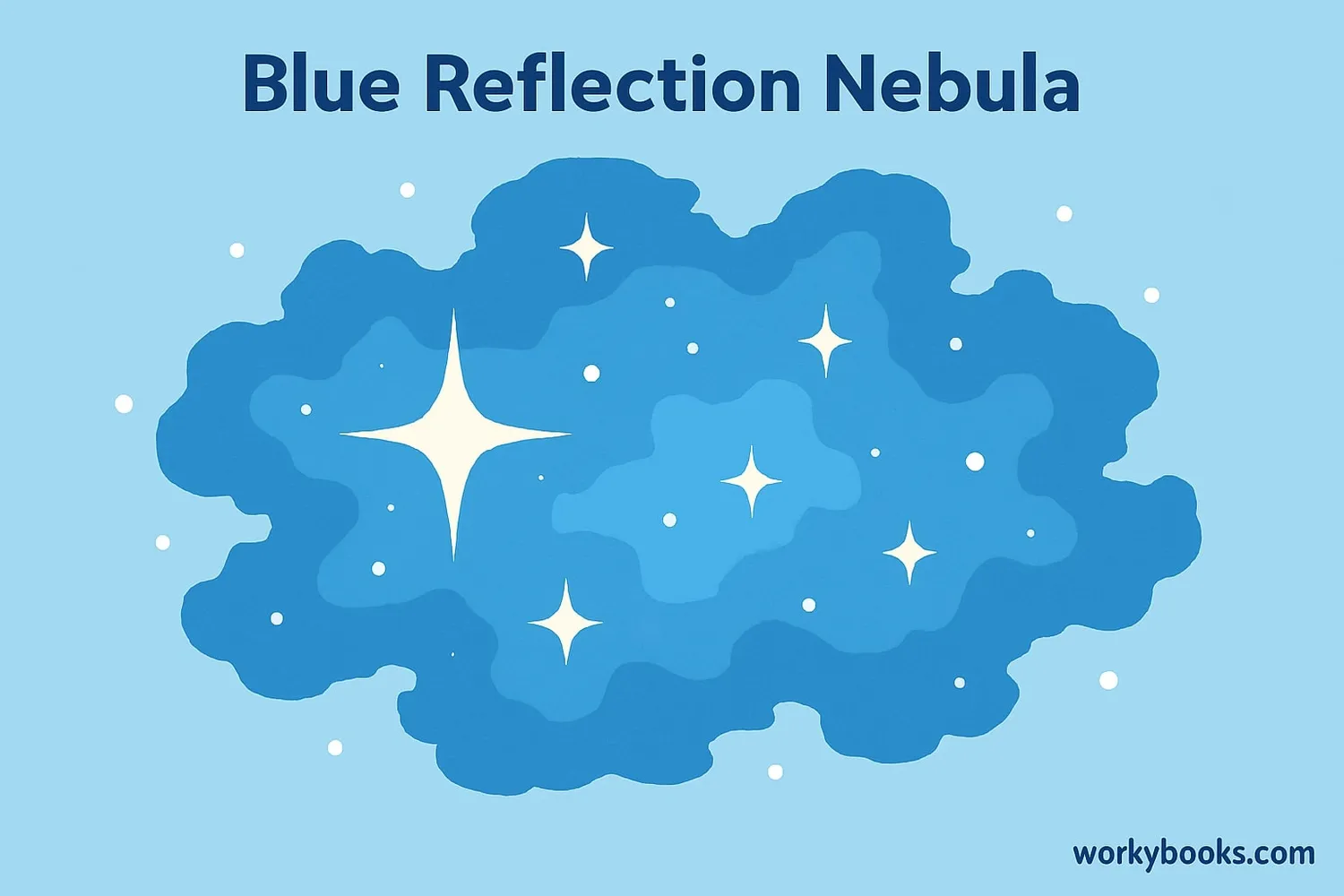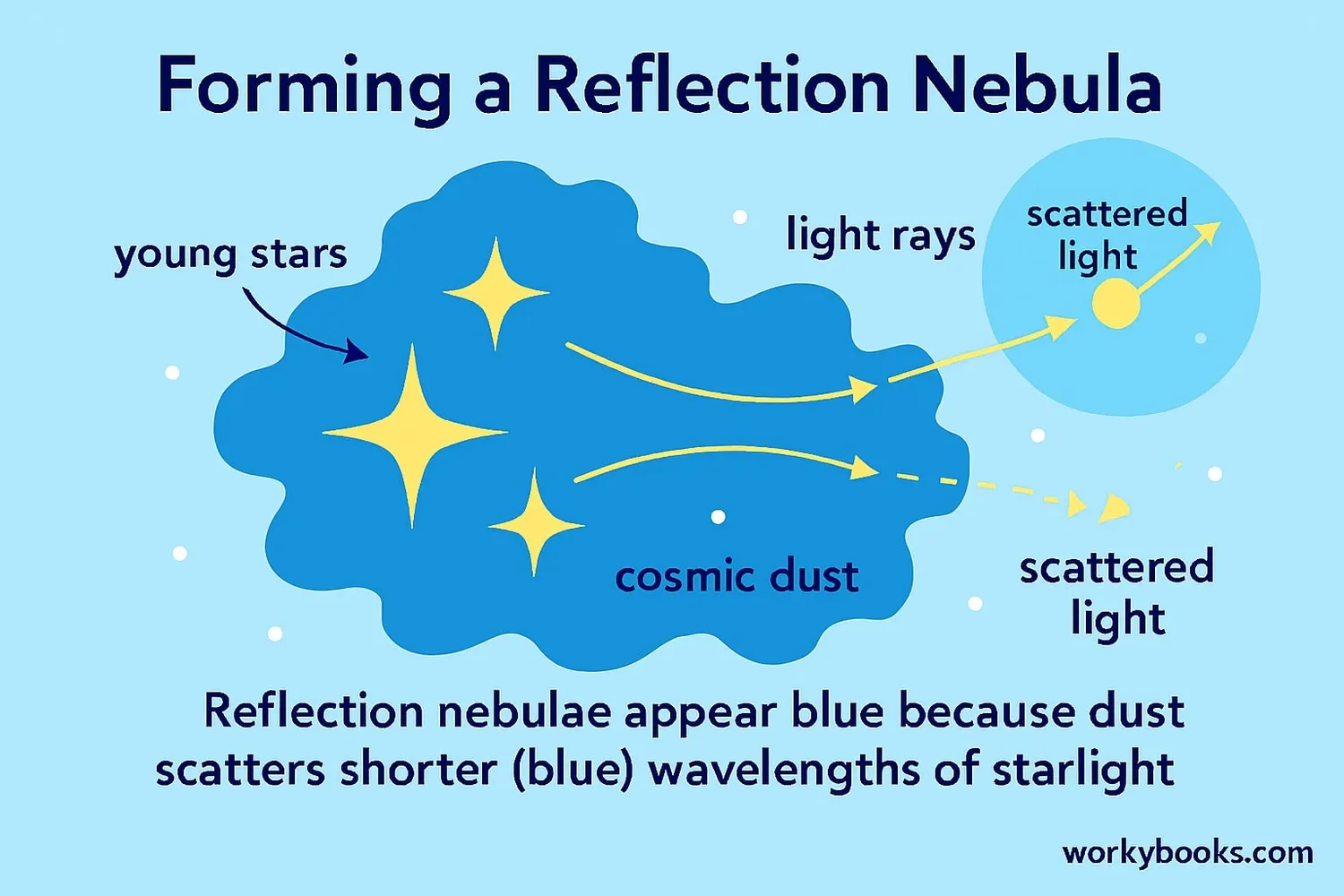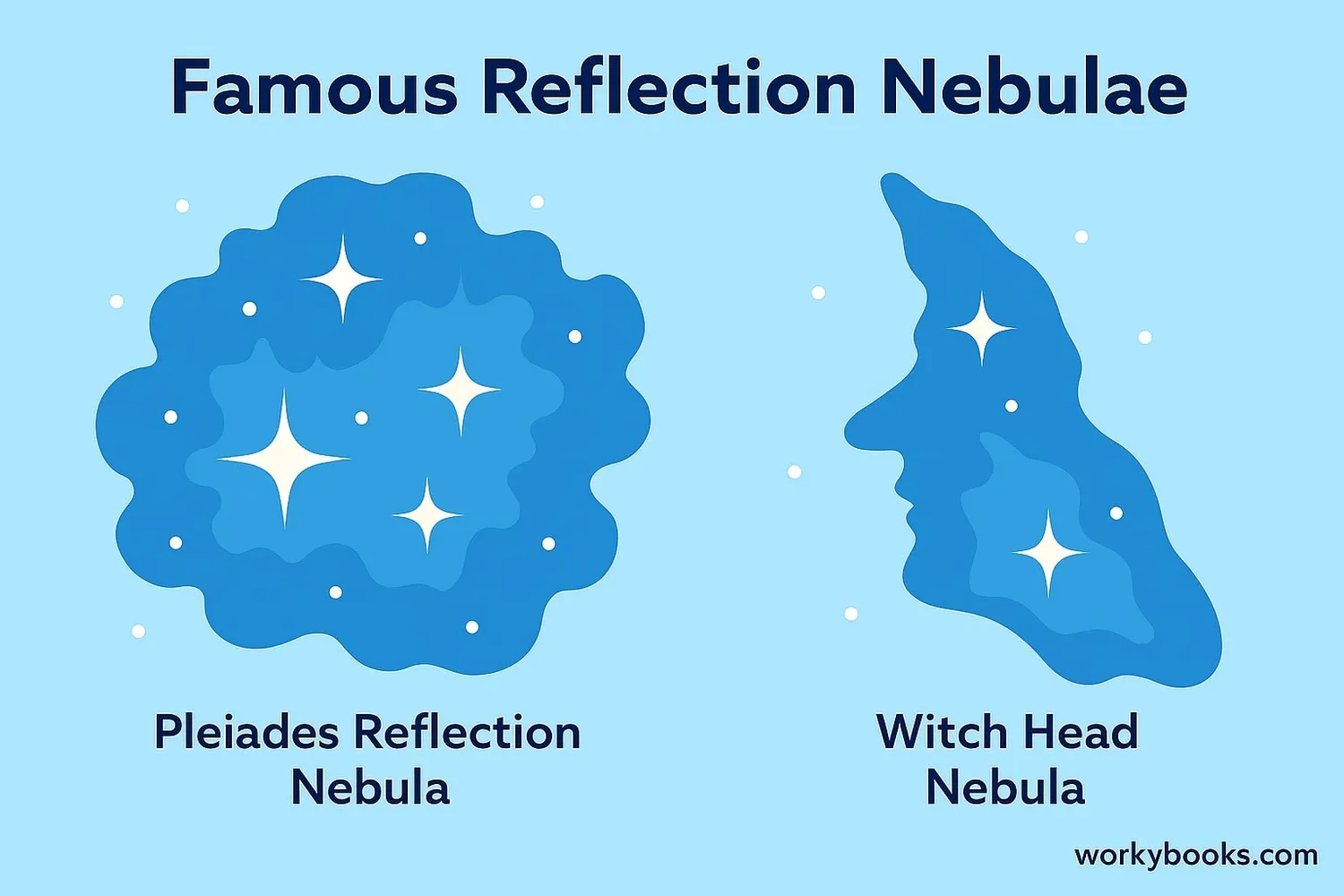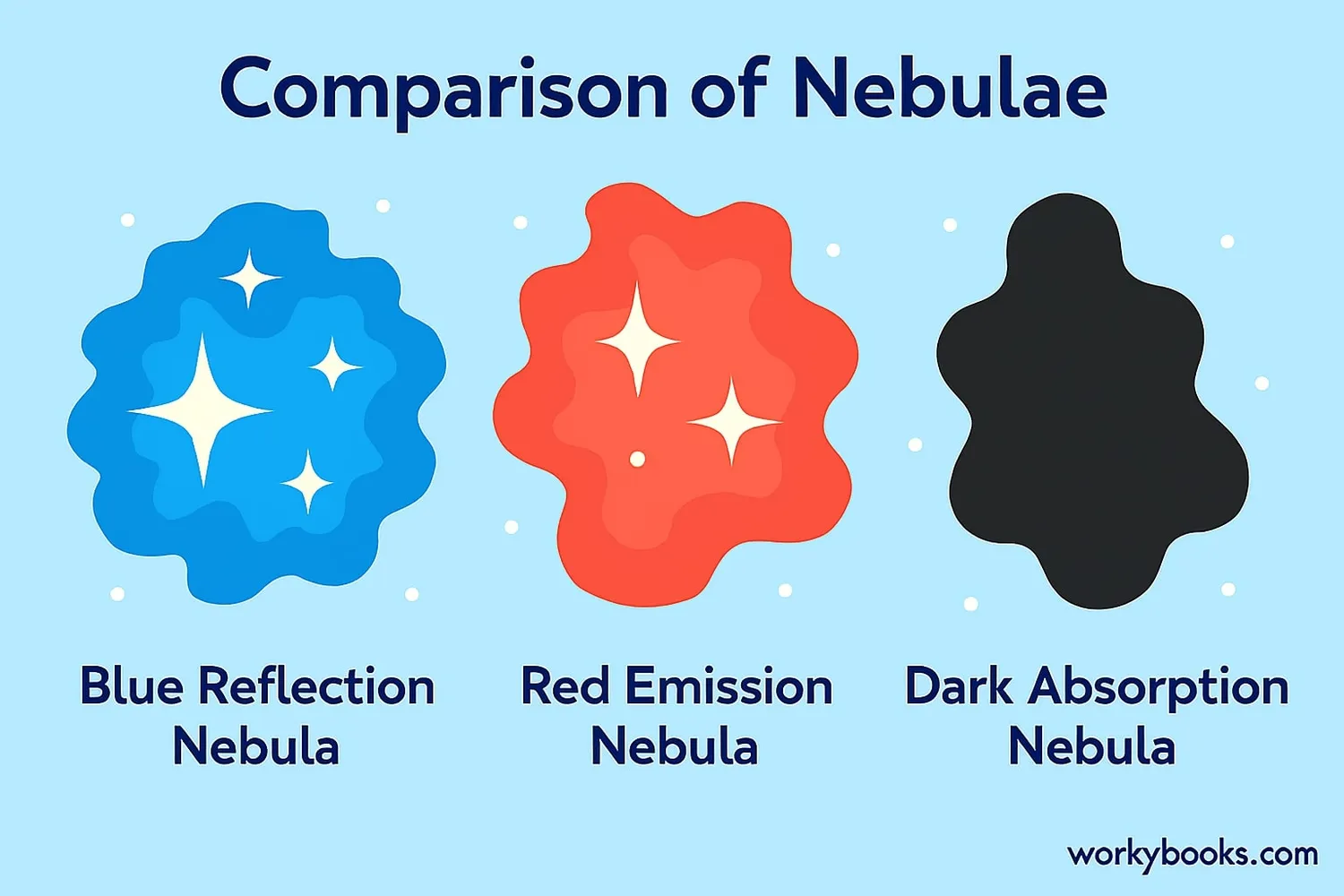Reflection Nebula - Definition, Examples, Quiz, FAQ, Trivia
Discover how cosmic dust clouds reflect starlight to create beautiful blue nebulae in space
What is a Reflection Nebula?

A reflection nebula is a cloud of interstellar dust that reflects the light of nearby stars. Unlike other nebulae that glow with their own light, reflection nebulae shine by reflecting starlight. They typically appear blue because dust particles scatter blue light more efficiently than red light—the same reason our sky appears blue!
Think of a reflection nebula as a cosmic mirror or a foggy streetlamp. The tiny dust particles in these clouds catch and bounce back the light from stars, creating beautiful celestial scenes. These nebulae are often found in regions where new stars are forming, as these areas contain plenty of dust and young, bright stars.
Space Fact!
Reflection nebulae are often called "cosmic clouds" because they look like fluffy clouds in space, but they're actually enormous—many light-years across!
How Reflection Nebulae Form

Reflection nebulae form through a fascinating process involving starlight and cosmic dust:
Dust Clouds
Large clouds of interstellar dust gather in space
Star Formation
Stars form within or near these dust clouds
Light Emission
Stars emit light in all directions
Light Scattering
Dust particles scatter the starlight, especially blue light
Nebula Appearance
The cloud becomes visible as a reflection nebula
The size of the dust particles determines the color we see. Since the particles are very small (smaller than the wavelength of light), they scatter blue light more effectively than red light through a process called Rayleigh scattering. This is the same reason our sky appears blue during the day!
Scattering Science!
The dust particles in reflection nebulae are extremely tiny—about the size of particles in cigarette smoke! Despite this, the nebulae can span dozens of light-years.
Examples of Reflection Nebulae

Some of the most beautiful objects in space are reflection nebulae. Here are a few famous examples:
Pleiades Nebula
Around the Pleiades star cluster, this is one of the best-known reflection nebulae
IC 2118
Also called the Witch Head Nebula, it reflects light from the bright star Rigel
NGC 1435
The nebulosity around the star Merope in the Pleiades cluster
The Pleiades reflection nebula is particularly famous. It's sometimes called the "Seven Sisters" and is visible to the naked eye as a tiny dipper-shaped cluster of stars. Through telescopes, the blue haze around these stars becomes clearly visible, created by starlight reflecting off dust particles.
Reflection Nebula vs. Other Nebulae

Nebulae come in different types based on how they interact with light. Here's how reflection nebulae compare to other kinds:
| Nebula Type | How It Shines | Typical Color | Example |
|---|---|---|---|
| Reflection Nebula | Reflects light from nearby stars | Blue | Pleiades Nebula |
| Emission Nebula | Glows from energized gas | Red/Pink | Orion Nebula |
| Dark Nebula | Absorbs light, appears dark | Black/Silhouette | Horsehead Nebula |
| Planetary Nebula | Glowing gas expelled by dying stars | Green/Red | Ring Nebula |
The key difference is that reflection nebulae don't produce their own light—they only reflect light from stars. Emission nebulae, by contrast, contain gas that gets energized by nearby stars and glows on its own, typically emitting red light (especially from hydrogen). Dark nebulae block light from objects behind them, creating silhouettes against brighter backgrounds.
Identification Tip
If a nebula appears blue and is located near hot, young stars, it's likely a reflection nebula. If it appears red and glows independently, it's probably an emission nebula.
Reflection Nebula Quiz
Test your knowledge about reflection nebulae with this quiz! Answer all 5 questions to see how much you've learned.
Frequently Asked Questions
Here are answers to some common questions about reflection nebulae:
Space Trivia
Discover some amazing facts about reflection nebulae and space!
Cosmic Dimensions
The dust grains in reflection nebulae are incredibly tiny—about 10-100 times smaller than a grain of sand! Yet these microscopic particles can create nebulae that span dozens of light-years.
Historical Discovery
Astronomer Vesto Slipher was the first to distinguish reflection nebulae from emission nebulae in 1912 by analyzing their spectra. He noticed their light spectra matched nearby stars rather than showing emission lines.
Color Exceptions
While most reflection nebulae appear blue, some can have reddish tints if the illuminating stars are red giants or if the dust contains certain materials that reflect red light better.
Hubble's View
The Hubble Space Telescope has captured incredibly detailed images of reflection nebulae, revealing complex structures and patterns within the cosmic dust that are invisible from Earth-based telescopes.


